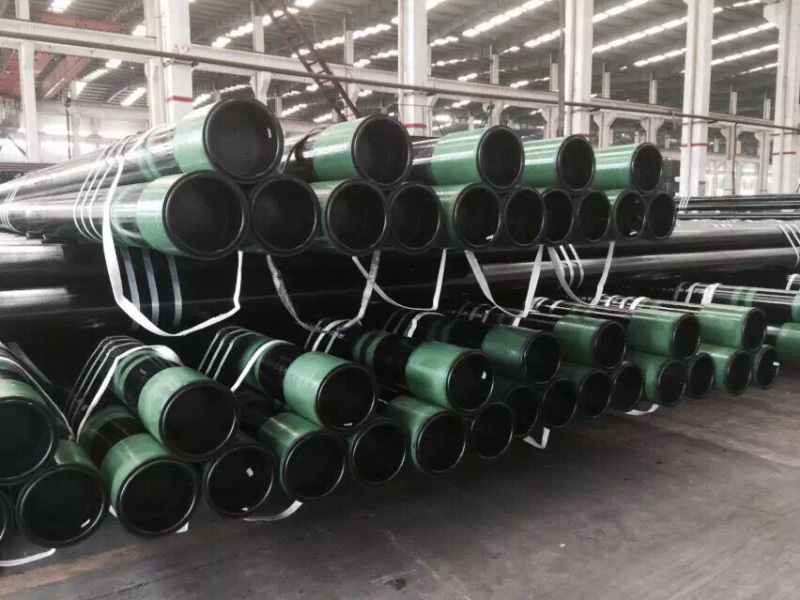Leading Smls Pipe and fittings supplier from China since 1991
Understanding Oil Well Tubing: Essential Insights for Industry Professionals
--- Oil well tubing is a vital component of the oil production process, serving as the conduit through which oil and gas are transported from the reservoir to the surface. Understanding its function, types, and maintenance requirements is crucial for professionals in the automotive and parts industry, particularly in the realm of automotive piping systems. At its core, oil well tubing is a series
Jul 07,2025

---
Oil well tubing is a vital component of the oil production process, serving as the conduit through which oil and gas are transported from the reservoir to the surface. Understanding its function, types, and maintenance requirements is crucial for professionals in the automotive and parts industry, particularly in the realm of automotive piping systems.
At its core, oil well tubing is a series of pipes that are inserted into a wellbore after drilling to facilitate the extraction of hydrocarbons. These pipes are designed to withstand high pressure and corrosion, ensuring the safe and efficient transport of fluids. The material composition of oil well tubing typically includes high-strength steel alloys capable of withstanding harsh environmental conditions both underground and above.
There are several types of oil well tubing, each tailored for specific applications and conditions. For instance, production tubing is specifically designed for transporting oil and gas from the well to the surface. On the other hand, casing pipes provide structural integrity to the wellbore and prevent the well from collapsing. It's critical for industry professionals to choose the appropriate type of tubing based on factors such as the well's depth, pressure, temperature, and the nature of the fluids being extracted.
One of the key aspects of oil well tubing is its maintenance. Regular inspections and maintenance practices are essential to ensure the longevity and effectiveness of the tubing. Professionals should be aware of potential issues such as corrosion, wear and tear, and blockages that could hinder production. The implementation of regular monitoring techniques, including non-destructive testing, can help identify problems before they escalate, ensuring that operations remain efficient and safe.
Furthermore, advancements in technology have led to the development of specialized coatings and treatments that enhance the durability of oil well tubing. These innovations not only prolong the lifespan of the pipes but also reduce the frequency and cost of maintenance. Industry professionals must stay informed about these advancements to make well-informed decisions regarding tubing selections and maintenance strategies.
In summary, oil well tubing is a critical element in the extraction of oil and gas. Professionals in the automotive and parts industry must understand its various types, functions, and maintenance requirements to optimize performance and ensure safety in operations. By prioritizing the selection and care of oil well tubing, industry stakeholders can contribute to more efficient and sustainable resource management in the oil and gas sector.
Oil well tubing is a vital component of the oil production process, serving as the conduit through which oil and gas are transported from the reservoir to the surface. Understanding its function, types, and maintenance requirements is crucial for professionals in the automotive and parts industry, particularly in the realm of automotive piping systems.
At its core, oil well tubing is a series of pipes that are inserted into a wellbore after drilling to facilitate the extraction of hydrocarbons. These pipes are designed to withstand high pressure and corrosion, ensuring the safe and efficient transport of fluids. The material composition of oil well tubing typically includes high-strength steel alloys capable of withstanding harsh environmental conditions both underground and above.
There are several types of oil well tubing, each tailored for specific applications and conditions. For instance, production tubing is specifically designed for transporting oil and gas from the well to the surface. On the other hand, casing pipes provide structural integrity to the wellbore and prevent the well from collapsing. It's critical for industry professionals to choose the appropriate type of tubing based on factors such as the well's depth, pressure, temperature, and the nature of the fluids being extracted.
One of the key aspects of oil well tubing is its maintenance. Regular inspections and maintenance practices are essential to ensure the longevity and effectiveness of the tubing. Professionals should be aware of potential issues such as corrosion, wear and tear, and blockages that could hinder production. The implementation of regular monitoring techniques, including non-destructive testing, can help identify problems before they escalate, ensuring that operations remain efficient and safe.
Furthermore, advancements in technology have led to the development of specialized coatings and treatments that enhance the durability of oil well tubing. These innovations not only prolong the lifespan of the pipes but also reduce the frequency and cost of maintenance. Industry professionals must stay informed about these advancements to make well-informed decisions regarding tubing selections and maintenance strategies.
In summary, oil well tubing is a critical element in the extraction of oil and gas. Professionals in the automotive and parts industry must understand its various types, functions, and maintenance requirements to optimize performance and ensure safety in operations. By prioritizing the selection and care of oil well tubing, industry stakeholders can contribute to more efficient and sustainable resource management in the oil and gas sector.
Hot Tags:
PREVIOUS:





